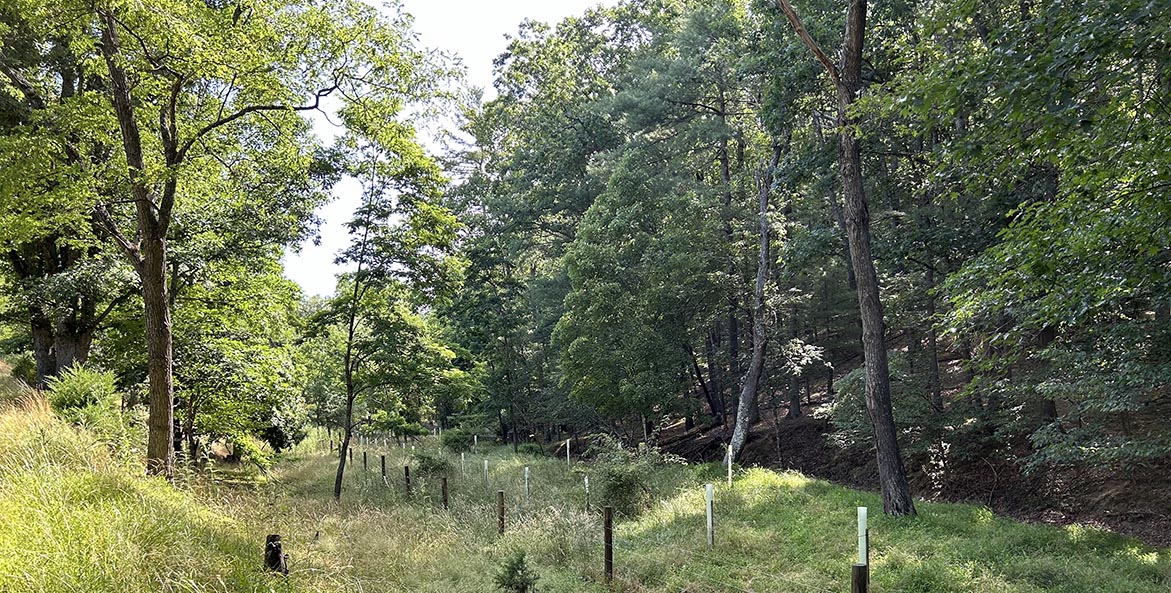Chesapeake Bay restoration is quicky approaching a critical moment in the 40-year effort: the 2025 deadline for reducing pollution that the six watershed states, the District of Columbia, and federal partners have been working toward since 2010. It is now clear that states will miss the deadline. So what comes next? In our recent report, we explain what the partnership is and how it drives local-led restoration successes across the watershed—from rebuilding oyster reefs in Virginia and expanding public access sites in New York to re-wilding landscapes and rivers in West Virginia. We also outline why the future of restoration depends on action this December by the region’s leaders, what steps they should take, and what the public can do to help (including urging these leaders to recommit to clean water restoration and set bold new goals for the future of our Bay). In a nutshell, we’re at a crossroads where the Bay watershed could become a more vibrant, thriving network of waterways enjoyed by all, or it could backslide, returning to a heavily polluted mess overwhelmed by the pressures of climate change, development, and the region’s population growth. The consequences are very real; the effects of dead zones on striped bass and other fish in the Bay are just one example. Algal blooms in the North Fork Shenandoah River are another. But there is also good news this month: the continued recovery of Bay grasses, a step toward more action to protect menhaden, increased funding for clean rivers and streams in Pennsylvania, and more.
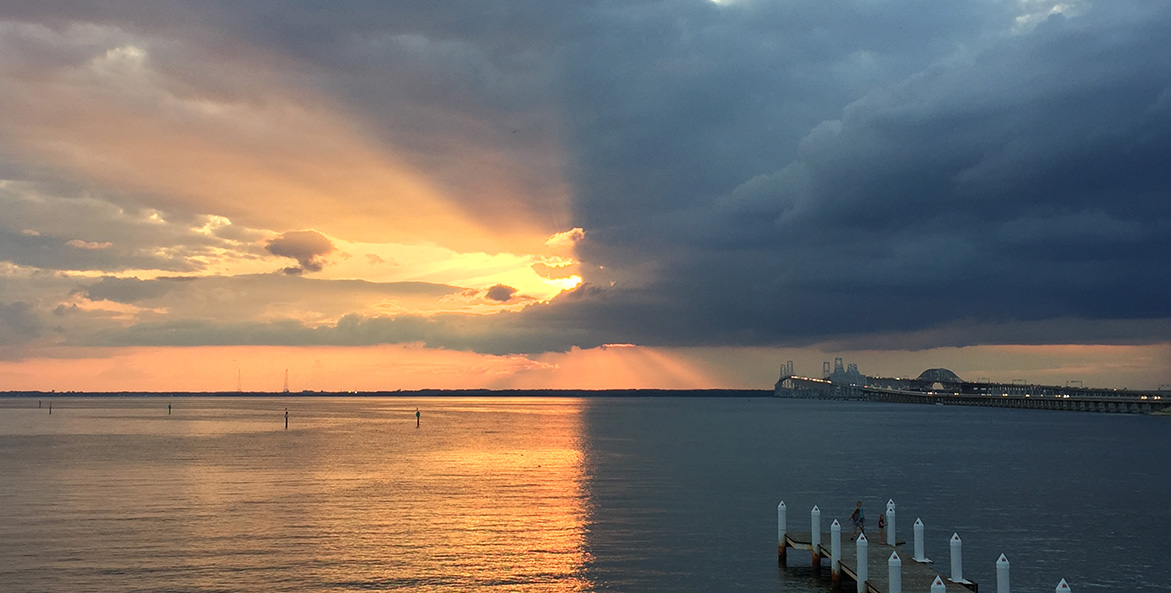
Roberta Mangos
Restoration at a Crossroads
For 40 years, the Chesapeake Bay watershed states, the District of Columbia, and federal partners have worked together toward clean water, thriving wildlife, and healthy habitats. Yet the partnership is at a pivotal moment. CBF’s latest report explains why the future of restoration depends on action this December by the region's leaders.
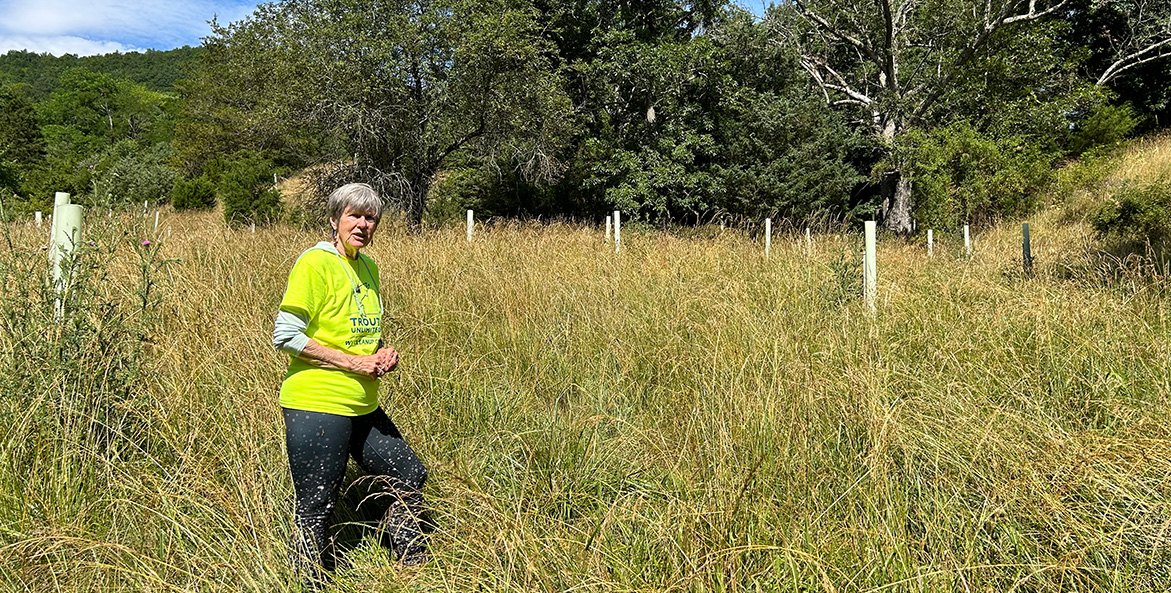
Farm owner Hope Yankey is surrounded by one-and-a-half year old trees, protected by white tree tubes, in this "re-wilding" area on Wilding Woolly Farm. Areas of the farm are being reforested to help protect water quality in the Lost River headwaters stream that runs through the farm.
Lisa Caruso/CBF Staff
Wild, Wonderful Waterways
At Wilding Woolly Farm, owners Hope and Bev Yankey are working to reforest part of their land and protect the headwaters of the Lost River. Their efforts aim to help native brook trout—which are sensitive to water temperature and conditions—as well as improve water quality in the Potomac River and downstream to the Chesapeake Bay.
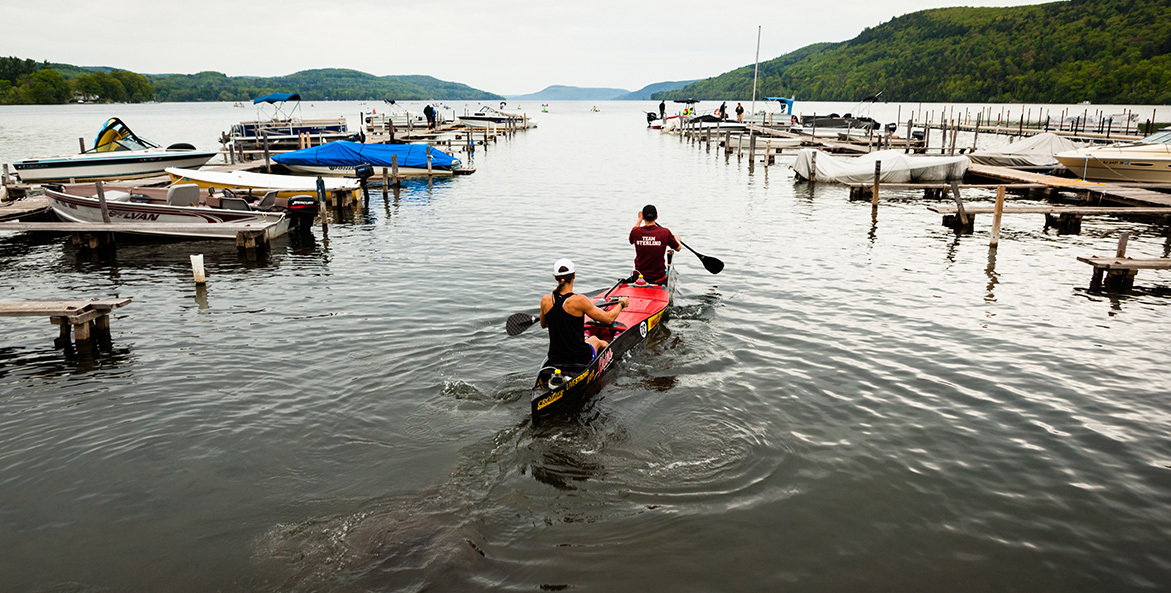
Paddlers on Otsego Lake, New York.
Will Parson/Chesapeake Bay Program
Seven Watershed Success Stories
From rebuilding oyster reefs to expanding public access sites, much of the funding and resources for watershed restoration are funneled through the Chesapeake Bay Partnership, which also helps coordinate efforts among jurisdictions. These seven examples help illustrate how the partnership provides critical support for local-led projects, often through federal and state grant programs.
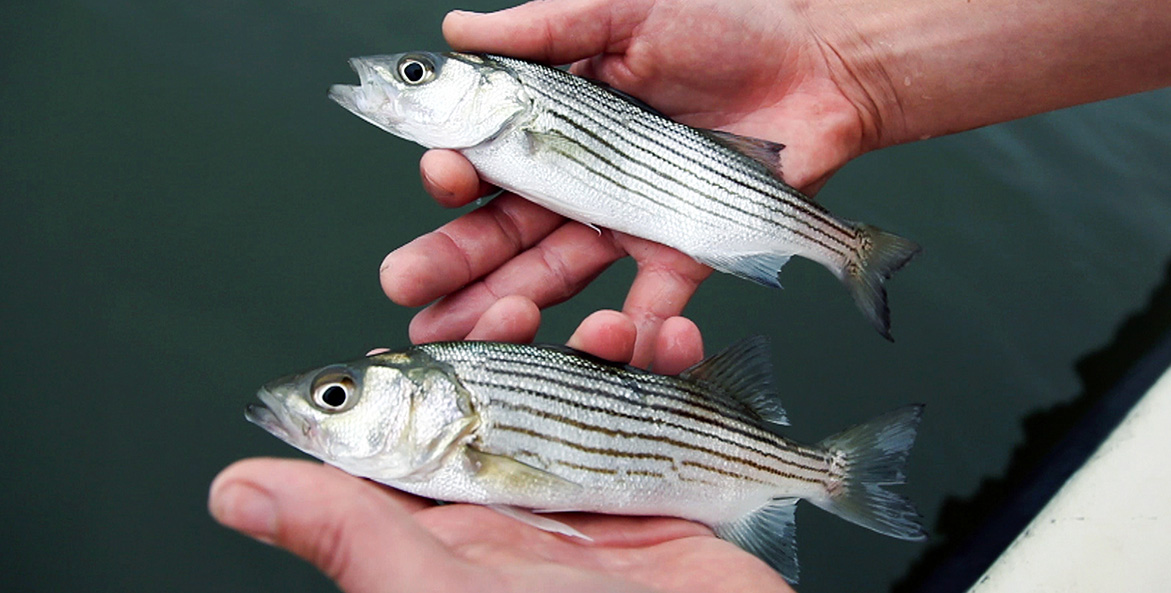
Juvenile striped bass, which stay in the Chesapeake Bay year-round, may endure low oxygen levels in summer dead zones.
Steve Droter/Chesapeake Bay Program
Life in a Dead Zone
Imagine running in the middle of a summer heat wave when suddenly someone removes much of the oxygen from the air around you. This is essentially what happens to striped bass and other fish in low-oxygen ‘dead zones.’ The stressful conditions, coupled with rising temperatures, aren’t only potentially deadly—they can change the fish themselves.
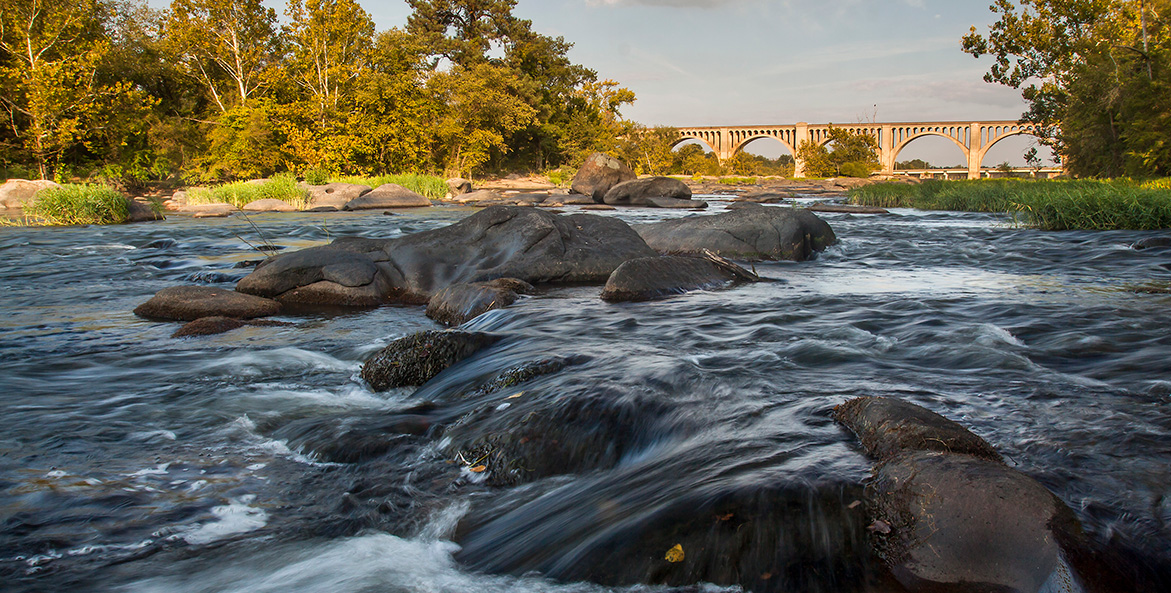
David Everette
Take Action for Our Bay’s Future
The 40-year unprecedented Bay partnership and any hope of achieving a revitalized Chesapeake Bay will break down unless the watershed’s governors and other state and federal leaders take action. If you care about the Chesapeake and its waters, our leaders need to hear from you now. Urge them to recommit to the Chesapeake Clean Water Blueprint and set bold new goals that will restore the health of our rivers, streams, and Bay.
In the News
- EPA Chesapeake Bay evaluations show need for action: Key states in the watershed are not fully on track to meet commitments to reduce pollution to the Bay by 2025.
- Virginia Beach panel tackles Bay restoration’s future: Federal and state elected representatives joined environmental leaders at the CBF event to discuss new approaches to restoration and conservation work at a pivotal crossroads in the forty-year effort.
- Maryland proposes further action for menhaden in Chesapeake Bay: The Atlantic States Marine Fisheries Commission voted to establish a workgroup to consider additional protections from industrial fishing of menhaden in the Bay after hearing new survey results that show low osprey nesting success.
- Bay grasses continue to recover: The extent of underwater grasses, a key barometer of Bay health, increased by seven percent this past year, according to the latest survey.
- Settlement will require reforestation in Maryland’s Harford County: In a positive step for forest conservation and clean water, the county has reached a settlement that will rescind the approvals for Abingdon Business Park and require developers to reforest parts of the property.
- CBF calls on Pennsylvania Supreme Court to reverse decision on Regional Greenhouse Gas Initiative (RGGI): The amicus brief cites the fundamental right Pennsylvanians have to clean air and pure water after lower court decision led to voiding the state’s participation in RGGI.
- EPA will investigate South Baltimore incinerator pollution: The agency decided to accept review of the recent Title VI Civil Rights Complaint filed on behalf of residents enduring pollution from Maryland’s largest trash incinerator.
- Pennsylvania budget increases funding for rivers and streams: $50 million in new annual funding for the Clean Streams Fund, which extends the Agriculture Conservation Assistance Program, is included in the Commonwealth’s General Fund budget for fiscal year 2024-25.
- Algal mats impair North Fork Shenandoah River: Excessive algal growth is once again restricting the community’s full use of the river for fishing and swimming, highlighting the importance of nutrient management plans.
Shop the CBF Store
All Items on Sale!
Now through Monday, August 26, all items in the CBF Store are 20% off! Grab some new gear as a last hurrah to summer or stock up on fresh designs for the school year. From beach towels to bucket hats, we've got you covered. Use the code SummerSale24 at checkout to claim your discount.
What You Can Do
- From living shorelines in Virginia to oyster gardening in Maryland, we've got a slew of events and volunteer opportunities coming up! Take a look at our events calendar to stay up to date.
- August is National Make-A-Will Month—a perfect time to consider leaving a legacy to support CBF for generations to come. Take advantage of our free online estate planning tool from FreeWill. Interested in discussing a gift opportunity? Reach out to Daniel Bornstein, Director of Planned Giving.
- Join CBF at the Maryland Rod & Reef Slam September 7–15! Register today for the fishing tournament or join us on September 15 for the Awards & After Party. Can’t make it to Maryland? Join CBF at the Virginia Rod & Reef Slam on September 14 for a day of discovery and fun on the Hampton River! Anglers of all ages and skill levels are welcome to celebrate oyster reef habitat and restoration with a morning of fishing and education.
- Restore America's Estuaries (RAE) is looking for enthusiastic volunteers who want to make an impact and grow their network by helping make the 2024 Coastal & Estuarine Summit in Washington, D.C. an unforgettable experience! Join RAE and CBF October 6-10, 2024. Volunteers who work one 8-hour shift will enjoy two days of free access to the Summit. Apply today!
- Sustain our fight to save the Bay! Become a Chesapeake Guardian today and we'll send you an exclusive Save the Bay Bluetooth speaker to say thanks.
If you would like to receive these periodic updates directly to your email, sign up for our Save the Bay newsletter!

